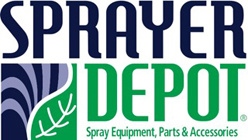 Contributed by guest blogger: Mark Techler, Techler & Associates
Contributed by guest blogger: Mark Techler, Techler & Associates
To be effective, a pesticide must be aplied properly.
When selecting the right spray tip for the job, it's imperative to fully read the pesticide or chemical label and heed instructions regarding tip type recommendation, application rate, spray quality and environmental restrictions. Then, consider the following 7 important factors:
-
Determine which type of spraying technique to use, "Broadcast" or "Banding": Broadcast spraying refers to a method of dispensing a pesticide or chemical over a nonlocalized area. Band spraying is defined as applying a pesticide or chemical on planted rows or the soil between rows (depending on the spray application).
-
Determine sprayer speed: The forward speed of the sprayer shoud be measured accurately. Speed can be determined by identifying how long it takes to drive a measured distance. Radar or ultrasound sensors should be calibrated after installation or servicing. Wheel-driven speedometers should be calibrated whenever the driving surface changes (for example, after cultivation of a crop).

-
Select the application rate from the pesticide/chemical label: Read the pesticide or chemical label carefully to determine an appropriate spray application rate.
-
Determine the necessary flow rate for the spray tip, or use the application rate chart for the desired tip
-
Select the pattern type:
Spray Pattern Type Description Flat Fan Pattern 
Available as a tapered spray for boom applications or an even spray for single tip applications. They have an elliptical orifice, which produces a narrow oval pattern.
Deflect Pattern

Also known as anvil or flood tips; deflect tips produce a wide-angled flat pattern. These tips generally produce a coarse, even spray. Cone Pattern 
These spray tips produce either a solid circular (full cone tips) or a hollow circular footprint (hollow cone tips). Full cones are ideal for spot spraying, whereas hollow cones are used on air-assisted sprayers and directed sprays. -
Select the tip size and pressure that provides the desired flow rate and application rate
-
Check the spay quality tables to ensure the spray tip and pressure create the required droplet spectrum: An important performance characteristic of a spray tip is both the size and the variation of droplets or spray quality. The American Society of Agrcultural and Biological Engineers (ASABE) developed the ASABE S572.1 standard to measure and interpret spray quality from tips. See it now by clicking the button below:

.png?width=280&name=SameDayShippingGuarantee-New%20(1).png)




